Antrim Coast |
|
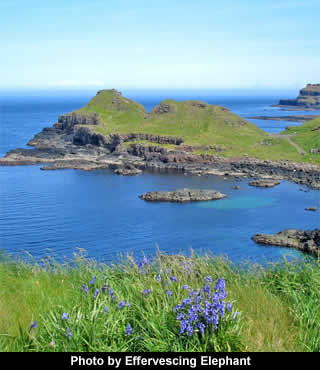 |
|||
One of the most scenic drives in the world |
|||||||
Listen to this article |
|||||||
|
|||||||
Antrim is the north-easterly one of Northern Ireland's six counties. A large proportion of the country's coastline lies within its borders. This one stretch of land includes an incredibly high number of beautiful, interesting and varied sights, making it the pride of its nation. |
|||||||
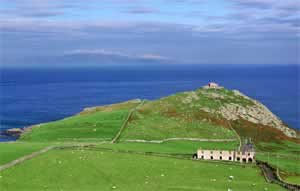 Torr Head. Photo wfbakker2 |
|||||||
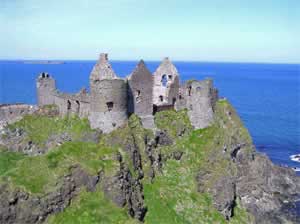 Dunluce Castle Photo Kenneth Allen |
|||||||
The most famous place of all is the Giant's Causeway, a bizarre geological formation of hexagonal rock columns. Close by is the terrifying Carrick-a-Rede Rope Bridge, the Old Bushmills Whiskey Distillery and Dunluce Castle - all wonderful destinations in their own right. |
|||||||
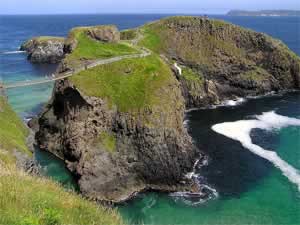 The Carrick-a-Rede Rope Bridge taking visitors to Carrick Island Photo Qole Pejorian |
|||||||
In between these landmarks are Antrim's towns and villages, each of which has its own distinct flavour. The National Trust village of Cushendun is arguably the prettiest, with its cute cottages and a sandy beach. Carnlough has a hotel that was once owned by Winston Churchill. |
|||||||
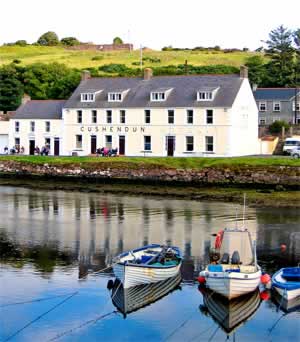 Cushendun Photo otfrom |
|||||||
These days, the coastline's peace is broken quite spectacularly at the town of Ballycastle, during August's Oul' Lammas Fair. In olden times it lasted for an entire week, but now all the food, drink and merrymaking is packed into two days. Even when everything calms down, this is still a town worth visiting. It takes all the traditional fun of a seaside resort, like arcades and ice cream, and enhances it with incredible views of curving cliffs and green fields. You can see out to Rathlin Island, and even further, to the Mull of Kintyre in Scotland. |
|||||||
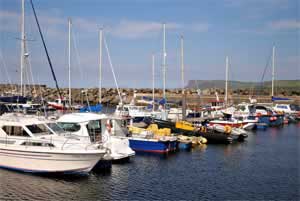 Ballycastle Marina. Photo ggjsmith |
|||||||
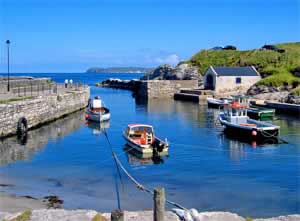 Balintoy Harbour with Rathlin Island in the distance. Photo otfrom |
|||||||
When the sun sets, you can head for a drink in Ballycastle's most famous pub, "The House of McDonnell". Its owners are real descendants of the McDonnell clan, who played a huge part in Irish history. |
|||||||
Their main rivals were the MacQuillans, another clan of proud warriors. In the 15th century they built Bonamargy Friary, which survives today as Ballycastle's oldest ruin. It's also the prettiest, as the crumbling walls have been surrounded by overgrown greenery. The main church's thatched roof is long gone, but parts of the windows still remain. The building was actually conquered by the McDonnells, and many of their warriors were buried here in a sealed vault. Taking pride of place is Sorley Boy, one of Northern Ireland's greatest ever fighters. |
|||||||
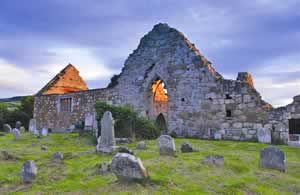 Bonamargy Friary. Photo Northern Ireland Tourist Board |
|||||||
After the friary fell out of use, it was once again used by a MacQuillan. Her name was Julia, and she was a nun who came here to live in solitude. For reasons long forgotten, she was murdered on the staircase to the upper floor. Anyone who wants to keep their luck would do well to jump over the 13th step, where she lay as the blood ebbed from her. Julia became known as the Black Nun. Her body is buried at the church entrance, underneath a strange circular headstone. Many visitors have no idea they're walking on a young lady's grave. |
|||||||
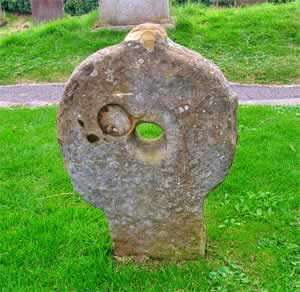 The grave of the Black Nun. Photo Aiden McMichael |
|||||||
Ballycastle is located on the Causeway Coastal Route, often recognised to be one of the most scenic drives in the world. Starting in Belfast, it runs the entire length of County Antrim, eventually ending up in Londonderry. Along the way it takes in many of Northern Ireland's famous landmarks, and the stretches of beautiful coast that connect them. |
|||||||
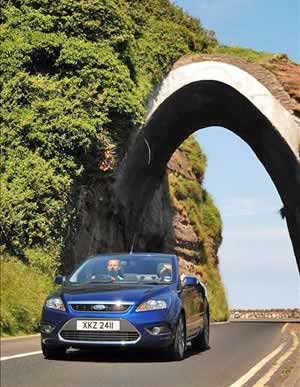 Driving along the Antrim Coast. Photo Northern Ireland Tourist Board |
|||||||
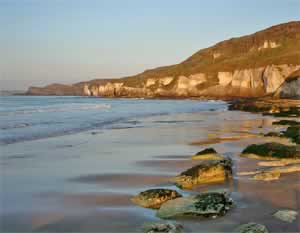 Portrush Beach. Photo ggjsmith |
|||||||
|
|||||||
Carrick-a-Rede Rope Bridge is managed by the National Trust and is open daily, 10am to 6pm (3.30pm in winter). Entry costs around £5.60 for adults, £2.90 children, £13.70 families. The Rope Bridge can be found on the B15, 7 miles east of Bushmills, 5 miles west of Ballycastle. Giant's Causeway 7 miles. Tel: 028 2076 9839 |
|||||||
Dunluce Castle is open daily, 10am to 6pm (5pm in winter). Entry costs around £2 for adults, £1 children. 87 Dunluce Road, Bushmills, County Antrim, BT57 8UY. Tel: 028 207 31938 |
|||||||
The Giant's Causeway Stones are managed by the National Trust and open all year round. The visitors centre (currently at the Causeway Hotel) is open daily, 9.30am to 5pm. 44a Causeway Road, Bushmills, County Antrim BT57 8SU. Tel: 028 2073 1582 |
|||||||
|
Pocket Britain is optimised for use on a smartphone or tablet with internet access. All content is subject to copyright. All reasonable methods have been used to ensure information supplied is accurate at the time of publication. However, it is advisable to check information before relying on it. Privacy Policy |